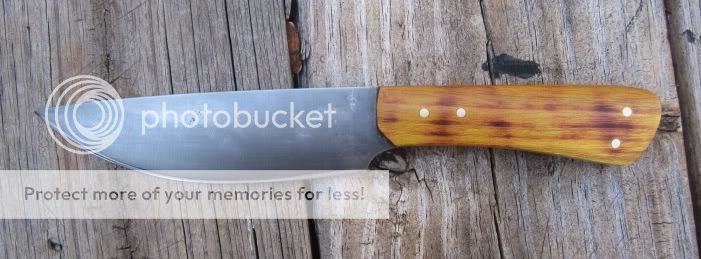Thanks RB - at the heart of my question is really 'gription' (a friend passed the term on to me - i take no credit for it!) - how much traction/grip will the given material have when its all bloodied and covered in tissue/fur/etc and it's 26F outside. Almost anything will work when it's sunny and 70, but drop the temp below freezing, add some blood or water and then lets evaluate how well something works - particularly when us weak humans gotta be working the knife - cold/wet/sleep-deprived.
Really, the question is; How well does the handle material stand up to the rigors a bushcraft knife requires? I really like the look of some of these *beautiful* wood-handled bushcraft knives, but am curious how well that wood holds up in a more demanding environment.
If it's below freezing and there's blood or water on the knife, it's going to freeze to your hand! Trust me on that one.
I've tried all kinds of knife handle materials while doing game prep and honestly once there's a coating of blood and fat on the knife, you don't really feel the handle material that much and handle shape makes as much of a difference as anything else. Once the stuff starts drying a bit the handle material means diddly squat as you're holding onto a layer of dried blood and gunk, which is generally pretty sticky stuff.
Handle shape, in my opinion, is a ton more important than handle material. The shape is very personal and depends heavily on somebody's style of use, what the knife is mostly used for, and just plain personal preference.
Another point to consider is that a "bushcraft" knife and a "survival" knife aren't necessarily one and the same thing. Depends on your outlook. Often the idea of a survival knife thrown around here is (this is pretty hyperbolic) the ONE AND ONLY tool you'll have on you when you get in trouble and you'll need to use it to do everything from make a fire to pry open car doors to defend yourself. A bushcraft knife, on the other hand, is in my mind, and in the vein of what I've gathered as the bushcraft spirit, a tool among a collection of other tools for wilderness living. The other tools can include things like an axe, saw, crook or hook knives, and other kinds of cutting tools where each tool has a more specialized purpose, so you're typically using your knife for cutting stuff. On that basis, those two knives can have very, very different designs.
Personally I'm a bit jaded toward both categories in certain ways. I carry an SAK and a small fixed blade every day, and on trips when I need more I take the knife pictured below, and maybe a small axe when camping and feel perfectly comfortable. If you don't have the proper mindset, no knife is going to save you in a "survival" situation, and no bushcraft knife is going to make your wilderness experience refreshing and easy. A good knife in the hands of a competent woodsman is a worth much though. (I make no claims to being a competent woodsman, so take my words as you will!)
As an aside, a lot of fancy burls used in knifemaking these days are stabilized, which makes them fairly tough. Some woods are tougher and more stable than others also--osage orange is a good example, and there are other really tough ones too.
Well that's a nice wall of text isn't it? Hopefully some of it was coherent and helpful.


